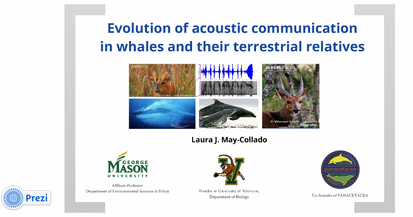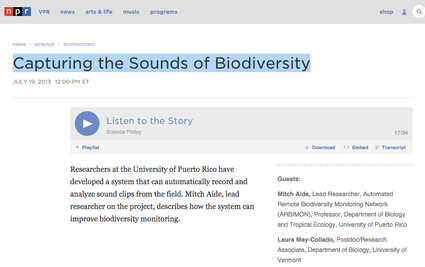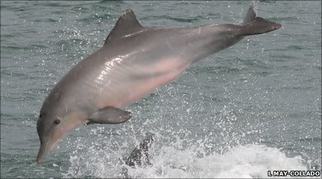Acoustic Communication
Studying whistle similarity in Sotalia spp. across their entire distribution
|
A new project we are starting this semester is on Sotalia spp. whistle structure across its entire distribution.This is a major effort lead by Gabriel Melo Alves as part of his dissertation. We are working in collaboration with several researchers who have been recording these dolphins throughout Brazil, Colombia, Venezuela, and Costa Rica. We hope to will be re-analyzing their recordings using Artwarp and Beluga to examine the degree of similarity in these dolphins communicative signals. This mega effort will lead to a better understanding signal variation, plasticity, and communication.
|
Studying the sounds of a new described river dolphin, the Araguaian dolphin
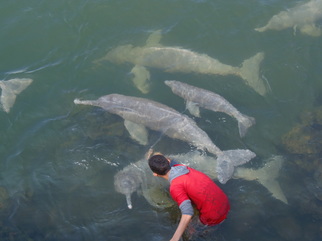 Photo by Gabriel Melo Alves dos Santos
Photo by Gabriel Melo Alves dos Santos
In 2005 I went to Yasuni National Park to study Inia geoffrensis sounds. I was searching for an area where they did not overall with Sotalia fluviatilis to test the hypothesis that they do not whistle. I found evidence that they do emit whistles but in a different context as true dolphins. Currently I am collaborating with Gabriel Melo Alves dos Santos (BioMA/UFPA Brazil) in discovering the sound repertoire of a recently described river dolphin Araguaian boto (Inia araguiaensis). Gabriel is leading the project and hopefully funding for next year will allow us to deploy satellite tags to learn more about their acoustic repertoire and how they use it as they move through their habitat.
Interspecific communication
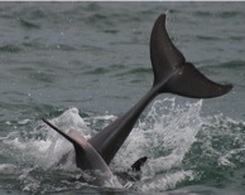
Dolphin communicative signals show great plasticity. Dolphins modify signal structure to cope with their environment, in response to stress, and in some species to mimic group members. Hence, whistle structure variations may offer insights to interspecific associations among dolphin species, which although temporal and opportunistic are common. In this study, with my colleagues Dr. Jennifer Lewis, Dr. Susana Caballero, and Ph.D. candidate Mauricio Cantor will be studying the interspecific interactions between Bottlenose and Guyana dolphins using various approaches including genetics, acoustics, and social networks.
Cetacean communicative signals and morphological constraints
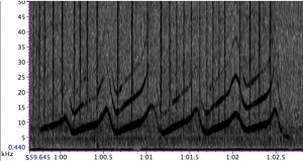
A negative relationship between cetacean body size and tonal sound minimum and maximum frequencies has been demonstrated in several studies using standard statistical approaches where species are considered independent data points. Such studies, however, fail to account for known dependencies among related species— shared similarity due to common ancestry. Our results in cetaceans showed that when phylogenetic relationships are considered the correlation between body size (length or mass) and minimum frequency is corroborated with 27% of the variation in tonal sound frequency being explained by body size compared to 86% to 93% explained when phylogenetic relationships are not considered. We are expanding this work to mammals in general.
Geographical variation on acoustic communication signals
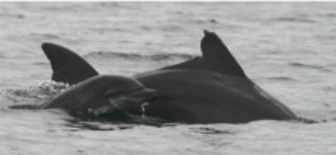
Whistles are narrowband, frequency-modulated sounds produced by many cetaceans. Several factors have been proposed to explain between- and within-species variation. By assessing the role of ambient noise, noise from boats, behavior, habitat structure, and sympatry with other dolphin species, my research seeks to generate understanding on signal plasticity of Bottlenose dolphins and Guyanese dolphins.
Evolution of acoustic signals and sociality in marine mammals
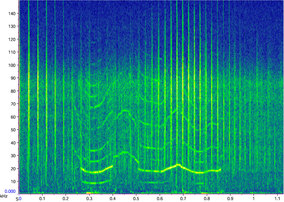
It is widely held that in toothed whales, high frequency tonal sounds called 'whistles' evolved in association with 'sociality' because in delphinids they are used in a social context. However, both 'whistles' and 'sociality' are broad concepts each representing a conglomerate of characters. Many non-delphinids, whether solitary or social, produce tonal sounds that share most of the acoustic characteristics of delphinid whistles. Because hypotheses of character correlation are best tested in a phylogenetic context, my research focuses on providing a phylogenetic based hypothesis on the evolution of communicative signals marine mammals and their relatives.
The effect of boat traffic on dolphin communication
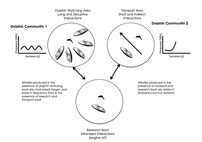
Dolphins rely on acoustic signals called whistles to identify each other and convey information about their environment. Dolphins are capable of adjusting their whistle to cope with acoustic changes in their habitats, including watercraft noise. However, there is little information on how (and if) dolphins respond to different types of watercraft traffic. In this study we evaluated the dolphin acoustic behavior in the presence of transport and dolphin watching boats. The results of this study will be may public soon.
Passive acoustic monitoring of Belize marine life
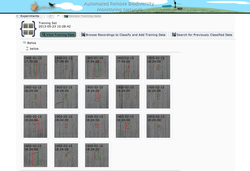
In collaboration with Dr. Marc Lammers and Tim Barhorst Oceanic Society in Belize, and the ARBIMON Team we deployed in 2012 an Ecological Acoustic Recorder (EAR) in Turneffe, Belize. Our goal is to document changes in marine communities using sounds and their responses engine noise. Do you want to listen to the marine community of Belize? go to the ARBIMON website and log as a guest, find the Belize project and voila! select any recording you want to listen.
